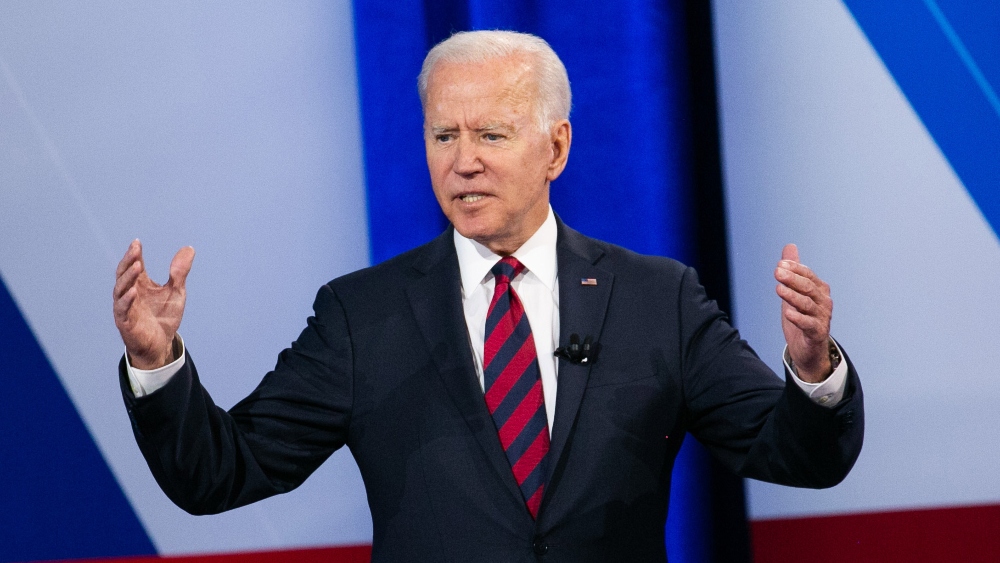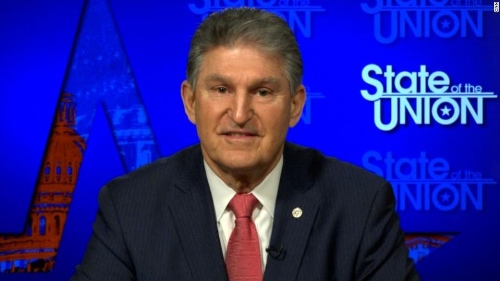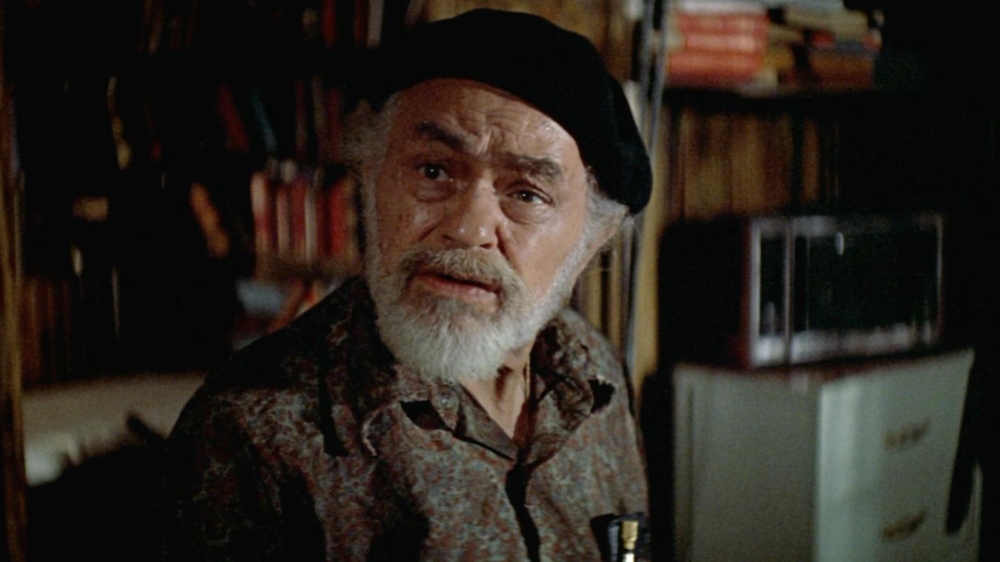
This column goes live in the week where the recently resurrected and pared down Inflation Reduction Act (formerly “Build Back Better”) is ostensibly mid-journey between its hairsbreadth Senate passage last weekend, and presumed House approval in the days ahead en route to eventually landing on the Resolute Desk — or wherever Joe Biden can affix his signature to it, while the momentum is still palpable.
Rather than rehash either its good-start provisions, in terms of things like medical insurance reductions, or near-misses, such as a lack of an insulin price cap for anyone under Medicare age (in which case, if anyone in your family is diabetic, you’re definitely going to keep needing that union insurance), we’re going to look briefly at the bill’s putative climate collapse-fighting measures, since — in the spirit of everything, everywhere, all at once, being inextricably linked together now — climate considerations, and keeping an eye peeled for “wet bulb temperatures” are likely to be an increasingly important component of on-set safety planning. Particularly when out on location.
As for the bill, as the Washington Post synopsizes, “to respond to a rapidly warming planet, Democrats set aside about $370 billion for energy security and climate change. The investments include a bevy of tax credits to incentivize wind, solar, and other renewable power sources while helping people purchase new or used electric vehicles and install energy-efficient heating and cooling systems in their homes. The bill creates a $1.5 billion program that includes new payments for companies that cut emissions of methane, a potent greenhouse gas, with some penalties for those firms that do not.”
In order to get all this done, the bill also included some fossil fuel boosting provisions — the very substance that got us into this existential jam — including, regrettably, one “to mandate new oil and gas leasing in the Gulf of Mexico and off the coast of Alaska, while party leaders committed to pursue a separate bill in the coming months that makes it easier for developers to override some environmental objections.

Objections, perhaps, like whether you can really have a thriving economy on a dead planet? In any case, such provisions were necessary to win Joe Manchin’s support, and the bill does represent the biggest omnibus legislation directed toward — and the most spending for — climate change mitigation ever done by the Federal government.
Will it be enough?
Well, this column is also being written in the midst of numerous record-setting heat waves in the Northeast and Europe, the ongoing assessment of flood damage in Kentucky (likely made worse by strip-mined hills that couldn’t hold moisture, let alone deluges), and more. All of which will be replaced by new weather headlines in another month or two.
Much of what’s going to happen to our weather (and everything it affects — well, like everything, but especially growing food, homebuilding, travel, and more) is already, dare we say, baked into the atmosphere now, but anything and everything that can be done to mitigate further damage is not only welcome but vastly overdue.
These thoughts were dancing about even before the Inflation Reduction Act became an emerging reality, after seeing an item in one of IATSE’s weekly newsletters about crew members on commercial shoots attempting to unionize.
We don’t mean, of course, the ASC level/Local 600 DPs who might shoot those commercials, or the SAG-AFTRA members acting in them, but rather the commercial production workers who, the accompanying video reminds us, are “some of the only non-union workers on set,” and unlike their studio counterparts, have even less protection against the abuse of minuscule turnarounds, 36-hour work “days,” extra-long commutes (with no provisions for nearby accommodations) even in the midst of exhaustion, where a rolled car, or horrific accident, is just one quick nod-off away.
BREAKING: Commercial production workers are unionizing with @IATSE to combat the nightmarish conditions they face — heat exhaustion, abuse, 16+ hour days w/ no overtime pay.
For decades, these workers have been some of the only non-union workers on set.
That’s about to change. pic.twitter.com/I9hDTGG3pJ
— More Perfect Union (@MorePerfectUS) July 21, 2022
In addition to all that, there was something else that struck about the long hours, and not just the observance that with fixed fees for their work, mismanaged and elongating work hours steadily break down into a smaller and smaller hourly wage.

It was a story shared by Production Supervisor Kit Garchow, who spoke of having less than 24 hours to organize a shoot in the middle of the desert, where it was 115 degrees (in the shade), resulting in a day that saw three hospitalizations, and six other people sent home due to heat exhaustion.
“This job,” he says, “is so dangerous if proper precautions aren’t taken.”
That’s always been the case, of course, whether the production is sloppy not only about extreme temperatures, but how weapons or moving vehicles are handled on set, and a myriad of other “inflection” points where, if proper attention isn’t paid, things can go disastrously wrong.
Filming outside, in heat, is increasingly going to become one of those inflection points, as conditions that may have once defined familiar locations, or spots with easy access within the proverbial “thirty-mile zone,” rapidly shift along with a consistently destabilizing climate.
Which is where “wet bulb temperatures” come in. Simply put, those are temperatures (derived from observations made by wrapping wet cloth around thermometer bulbs) where moisture, or in this case, your sweat, ceases to cool you down, because there is so much humidity in the air, that the sweat has nowhere to evaporate “to,” and so, you stay soggier, yet get hotter and hotter.
Until at some point — a point that is lower than what it would be in a “dry” heat — that temperature becomes quickly fatal.
Or as a Kansas City Magazine article succinctly put it, when looking at weather shifts in the midwest, “temperatures as low as eighty-six degrees Fahrenheit can be unsurvivable when paired with high humidity. Temperatures of ninety-five degrees with ninety-five percent humidity can kill.”
So now imagine outdoor locales in favorite tax-haven production areas in the Southeast, where it’s already humid, that keep getting hotter. Or imagine places already hot — looking at you, New Mexico and SoCal — getting more humid.
What will the safety parameters of already-grueling location shoots become, as the weather becomes less stable?

Will outdoor filming (whether you’re in a union or not, though certainly being in one would provide more protection in these push-come-to-shove scenarios) become, more increasingly, a thing of the past, as crews retreat to LED volumes to recreate what is – or used to be – “outside?” (Shades of Edward G. Robinson’s death chamber scene in Soylent Green!)
The implications aren’t just considerable for showbiz (especially considering how long crew folk are expected to spend outdoors when location-ing), but consider what they’re eventually going to mean for sports, construction, engineering, and agricultural work.
As Garchow says later in the video, addressing the constant burnout and turnover in his ranks, “we want to create a sustainable industry. Right now, it’s just not sustainable in any way, shape, or form.”
That of course can be said about much of modern life, its economic and other structures. As NASA climate scientist Peter Kalmus tweeted after the IRA passed the Senate while urging even more profound climate action: “We are already in dangerous territory at current 1.3°C and it gets worse very quickly from here.”
Or as a certain songwriter once wrote, “you don’t need a weatherman to know which way the wind blows.”
A wind that’s coming whether you’ve been sent to spend hours working outside in 115-degree heat — or whether you’re one of the producers sending people there.
 Mark London Williams is a BTL alum who currently covers Hollywood, its contents and discontents, in his recurring “Across the Pond” dispatch for British Cinematographer magazine, contributes to other showbiz and production-minded sites, and musters out the occasional zombie, pandemic-themed, or demon-tinged book and script, causing an increased blurring in terms of what still feels like “fiction.”
Mark London Williams is a BTL alum who currently covers Hollywood, its contents and discontents, in his recurring “Across the Pond” dispatch for British Cinematographer magazine, contributes to other showbiz and production-minded sites, and musters out the occasional zombie, pandemic-themed, or demon-tinged book and script, causing an increased blurring in terms of what still feels like “fiction.”
Mark London Williams’ Union Roundup column will appear every Tuesday. You can reach him to give him tips and feedback at [email protected]. He can also be found on Twitter @TricksterInk.





